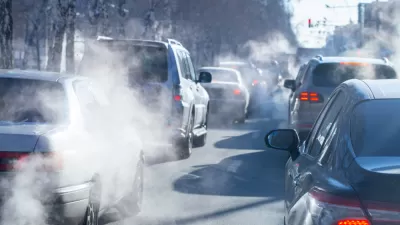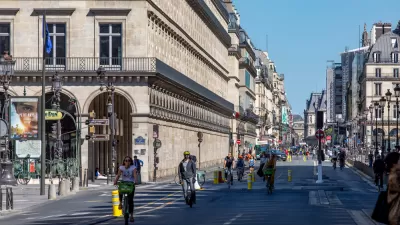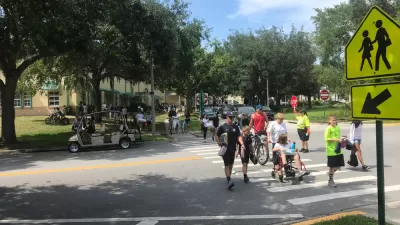A recent article explores the promise—and potential pitfalls—of new technology to support the growing popularity of urban pedestrianism.

According to a recent article by Michael Scott, “the convergence of pedestrianism, technology and the built environment is poised to spark a walkability revolution that promises to yield a meaningful return to people as well as the cities in which they live.”
Describing what he calls the “Age of Mobile Pedestrianism,” Scott surveys some of the apps and ideas that are changing the way that people of all ages engage with their cities.
For instance, Scott quotes Steve Carroll, chief operating officer of RideScout, a mobile app that provides real-time information for getting around on foot or by other alternative forms of transportation: “We’ve been receiving interest from both local governments and businesses that want to provide incentives for their people to become car free. They have an open ear because of traffic congestion and other concerns associated with car-dependent lifestyles.”
Scott also acknowledges the potential pitfalls of pervasive technology, including distracted walkers and, of course, luddites. On the latter point, Scott quotes James Shaffer, president of Streetscapes, Inc.: “While all of the buzz is about smartphones, we must also consider the subset of people who couldn’t care less about technology yet want key information to enhance their walk experience.”
FULL STORY: Smart Cities and the Technology of Walking

Study: Maui’s Plan to Convert Vacation Rentals to Long-Term Housing Could Cause Nearly $1 Billion Economic Loss
The plan would reduce visitor accommodation by 25,% resulting in 1,900 jobs lost.

North Texas Transit Leaders Tout Benefits of TOD for Growing Region
At a summit focused on transit-oriented development, policymakers discussed how North Texas’ expanded light rail system can serve as a tool for economic growth.

Why Should We Subsidize Public Transportation?
Many public transit agencies face financial stress due to rising costs, declining fare revenue, and declining subsidies. Transit advocates must provide a strong business case for increasing public transit funding.

How Community Science Connects People, Parks, and Biodiversity
Community science engages people of all backgrounds in documenting local biodiversity, strengthening connections to nature, and contributing to global efforts like the City Nature Challenge to build a more inclusive and resilient future.

Alabama: Trump Terminates Settlements for Black Communities Harmed By Raw Sewage
Trump deemed the landmark civil rights agreement “illegal DEI and environmental justice policy.”

Dear Tesla Driver: “It’s not You, It’s Him.”
Amidst a booming bumper sticker industry, one writer offers solace to those asking, “Does this car make me look fascist?”
Urban Design for Planners 1: Software Tools
This six-course series explores essential urban design concepts using open source software and equips planners with the tools they need to participate fully in the urban design process.
Planning for Universal Design
Learn the tools for implementing Universal Design in planning regulations.
City of Santa Clarita
Ascent Environmental
Institute for Housing and Urban Development Studies (IHS)
City of Grandview
Harvard GSD Executive Education
Toledo-Lucas County Plan Commissions
Salt Lake City
NYU Wagner Graduate School of Public Service





























